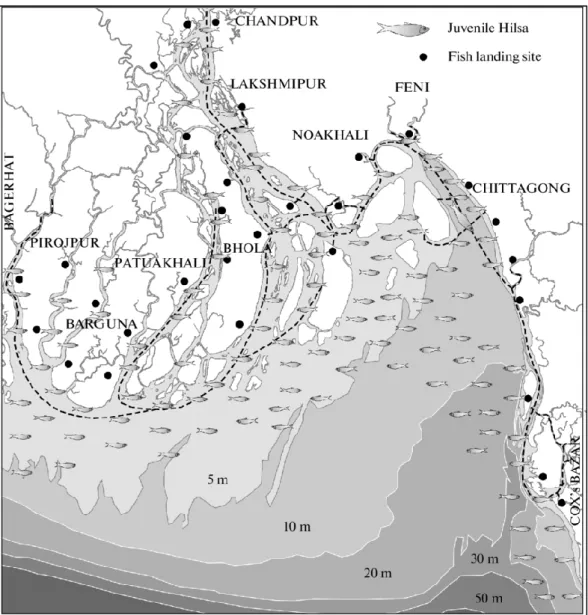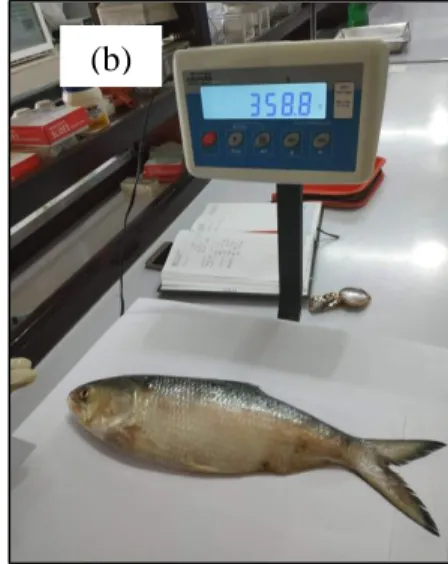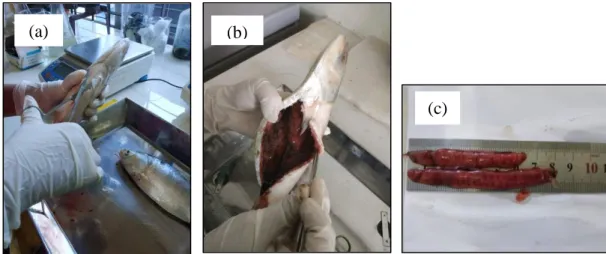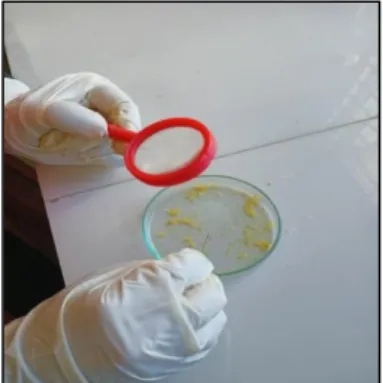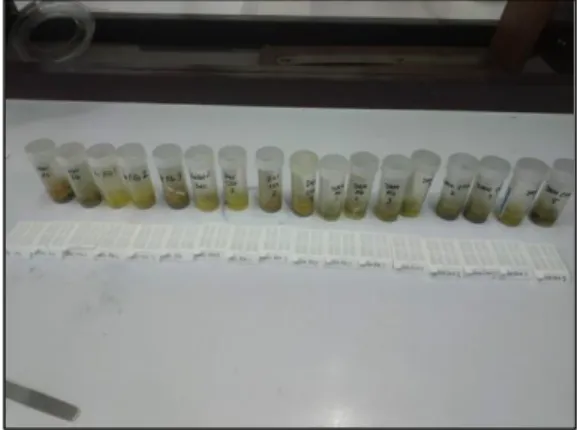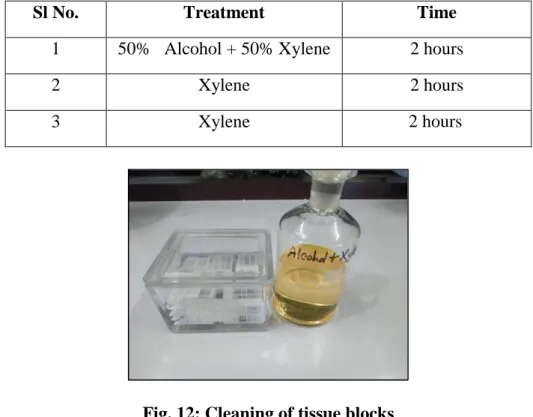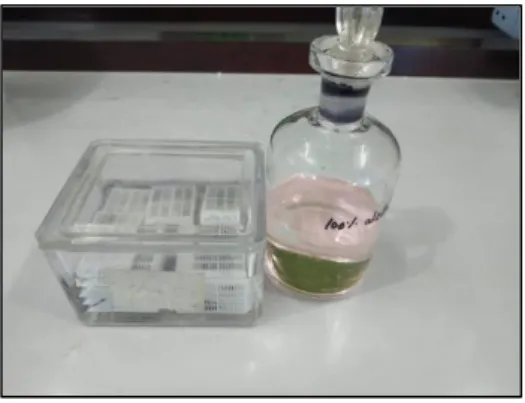I hereby declare that I am the sole author of the thesis entitled Reproductive pattern and histological profiling of maturity stages in Tenualosa ilisha of Chattogram Coast, Bangladesh. Moudud Islam, Assistant Professor, Department of Fish Biology & Biotechnology, CVASU for his valuable supervision and guidance. Avijit Talukder, Assistant Professor, Department of Marine Bioresource Science, CVASU, for his encouragement and cooperation at all stages of this study from its inception to completion.
Md Sadequr Rahman Khan, Associate Professor and Head, Department of Marine Biological Resource Science, CVASU, for his inspiration, technical support and kind suggestions during the research work. My sincere thanks to all the graduate students and technical staff of the Department of Marine Bioresource Science for their encouragement and research support. To analyze the length-weight relationship, condition factor, relative condition factor, oocyte diameter, fecundity and histological grades were identified by collecting fish samples throughout the year (February 2019 to January 2020).
The findings will allow for a better understanding of the stages of gonadal development of Tenualosa ilisha and the maintenance of the capture period in accordance with these stages.
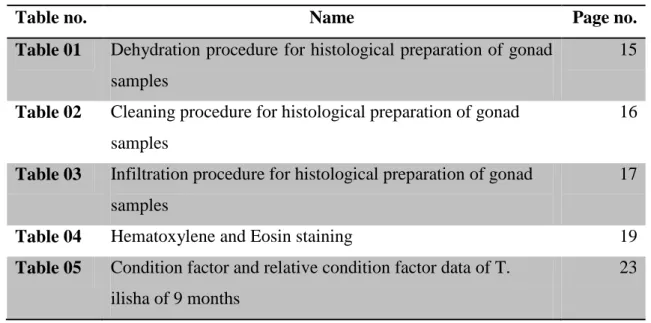
CHAPTER ONE INTRODUCTION
Background of the study
2 | P a g e As a consequence of the government's austere measures, the entire country's production in Hilsa in the financial year 2020-21 was 5.50 lakh tonnes. Hilsa fisheries are directly or indirectly responsible for the livelihood of a large number of people in our country (Prakash et al., 2020). It spawns at a specific time of the year, but the Bengali months of Ashwin-Kartik (September-October) are the main spawning months due to the full moon phase.
During this time, most of the brood hilsa have been caught in the spawning areas of the country. The Hilsa migrate upstream from the Bay of Bengal to spawn two to three years into their life cycle (Rahman et al., 2017). 3 | P a g e The government of Bangladesh has taken steps to conserve brood and young hilsa in nursery and spawning areas, recognizing the economic and nutritional value of the species.
The Government of Bangladesh has prepared the Hilsa Fishery Management Action Plan (HFMAP) and has imposed a ban on indiscriminate catches of hilsa during specific periods of the year.
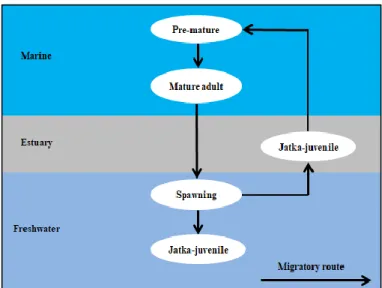
Objectives of the research
Research questions
CHAPTER TWO
REVIEW OF LITERATURE
Distribution of Hilsa
5 | The site areas also include huge rivers in and around the Sundarbans and other coastal islands (Hossain et al., 2016).
Length-weight relationship
2014) conducted a study in the Persian Gulf and the rivers of Khouzestan Province in Iran were analyzed. The study of length-weight relationship of Tenualosa ilisha in Meghna River, Bangladesh was carried out by Flura et al. The total length of female Hilsa was measured in the study conducted by Akhter et al.
In the present experiment different groups of Hilsa females were sampled and their weight ranged from 420.00 g to 1472.00 g. Monthly fluctuations in both sexes Gonadosomatic Index (GSI) were extremely visible, which was investigated by Roomiani et al. The maturation season in AR and BR starts in March, while spawning starts in April and July in AR and August in BR, according to changes in GSI values.
The GSI result of this study suggested that Hilsa has a prolonged spawning season, but large spawning occurs in October-November, with a distinct peak in October, indicating the peak spawning season for Hilsa in Bangladesh.
CHAPTER THREE METHODOLOGY
- Sampling period and sampling frequency: The sampling of fish was carried out for a period of one year from February 2019 to January 2020 by regular visits to the
- Sample collection and transportation
- Recording of length-weight data and determination of length-weight relationship
- Estimation of fecundity
- Estimation of oocyte diameter
- Histological process
- Dehydration
- Embedding
- Sectioning
- Staining
- Mounting
3-5 specimens were collected from each sampling station, and 9-10 specimens were collected as a sample every month. Fish that showed fresh and desired sizes were treated as sample species, which were immediately stored in an ice box at a sample ratio of 1:2 and transported to Oceanography. The total length and total body weight of each fish was measured using a measuring scale or an electric scale (Figure 06).
It is a measure of the overall health of the fish, calculated by the ratio of body weight to body length. W = weight of fish in grams (g) L = length of fish in centimeters (cm) 3.6 Estimation of relative condition factor. The relative condition factor is the ratio of the observed weight of a fish at a given length to the expected weight of a fish of the same length, as calculated from length-weight regression (Le Cren, 1951).
After removing the unwanted debris, digestive tract and gut, the gonads were carefully collected using forceps (Fig. 07). Finally, 3-4 subsamples were cut from different parts of the ovary and then the subsamples were weighed. Oocyte diameter was measured every month with an ophthalmic microscope in micrometers (Fig. 09).
Seasonal maturation of gonads was studied histologically to determine breeding season and maturation of fish. A small portion of the gonad from each dissected fish was sub-sampled by cutting a transverse section midway along the anteroposterior axis. In this study, Bouin's Solution was used as fixative and each gonad was kept in a vial filled with fixative solution (Fig. 10).
Since paraffin is immiscible with water, the water must be replaced by immersion in increasing concentrations of alcohol (Figure 11). This step is essential to remove the turbidity of the dehydrated tissue and to make the tissues transparent (Figure 12). Trimming is a process where the unwanted wax layers of embedded blocks are trimmed away with a knife to produce matching blocks.
The slides were then dried with the help of a slide heater at 37°C for several hours (Fig. 15).
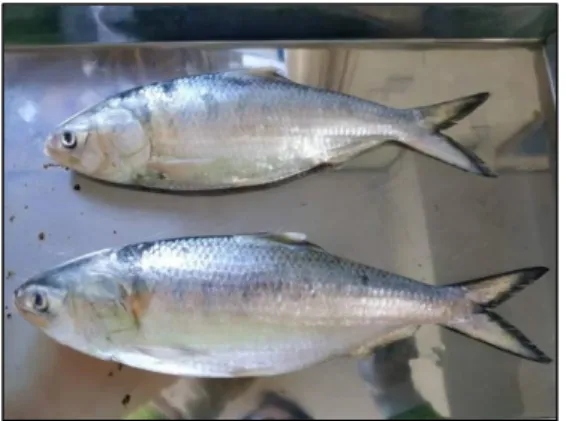
CHAPTER FOUR RESULTS
Length-weight relationship
Condition factor and relative condition factor
Data are presented as mean ± standard deviations for each month over the period from February, 2019 to January, 2020. Monthly value of condition factor „K‟ and relative condition factor „Kn‟ were calculated and presented in the Figure-3 and Figure. -4, respectively. This one year comparison showed that there was a similar trend between condition factor „K‟ and relative condition factor „Kn‟ throughout the year.
Condition Factor (K)
Relative Condition Factor (Kn)
Oocyte Diameter
Gonado Somatic Index (GSI) - Female
Fecundity
Gonadal maturation stages in female
Oocyte Diameter
- Secondary vitellogenic stage
- Maturing stage
- Ripe stage
- Spent
- Regressing stage
Fertility is one of the most essential features of fish reproductive biology, as it tells us how many mature eggs a female may lay in a single spawning season. Ovary enlarges, light yellow to dark pink in color and occupies about half of the peritoneal cavity. At this stage ovary filled with early perinucleolar stage (Epo) oocytes and late perinucleolar stage (Lpo) oocytes.
The secondary vitellogenic stage is accompanied by the accumulation of eosinophilic yolk globules in the inner cortex. Ovary was fully grown at this stage, yellowish and orange in color and occupied the entire body cavity. Ovary was reddish and flaccid, shrunken, hollow, sac-like structure, small number of immature eggs were sometimes present with denatured ovules.
Ovary of completely spent females contains numerous post-ovulatory follicles at various stages of degeneration, atretic oocytes and a reserve supply of oogonia and perinucleolar stage oocytes.
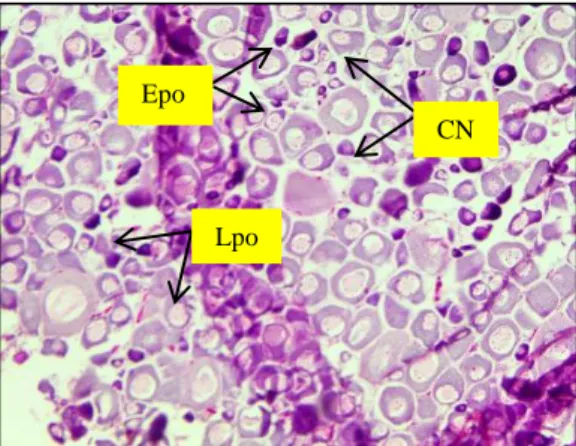
CHAPTER FIVE DISCUSSION
- Length-weight relationship
- Condition factor and relative condition factor
- Gonado-somatic index (GSI)
- Oocyte diameter
- Histological observation of gonad
1989) estimated Fulton's condition factor and relative condition factor, showed that there was no apparent relationship between the GSI and condition factors. Another high value of GSI was also observed in September, indicating the second stage of ovarian maturation in females. Average GSI value for female T. ilisha increased significantly from the month of March to May.
In the month of September, the GSI value rose again and October is the prohibition period for the Hilsa fishery. In the month of January, the GSI value reached its peak and then fell drastically. 1989) reported that spawning in females began in April and gradually increased until October. They were observed to peak in October, while the lowest GSI value was recorded in April. 2020) revealed that the spawning season for female T. ilisha runs from April to May.
In this study, the annual increase in the diameter of the oocyte of T. ilisha was observed every month throughout the year and compared with the GSI of the females. Oocyte diameter data show a significant correlation with GSI changes, which suggest a synchronized development of gonads with increasing oocyte size. 2016) mentioned that the strong relationship between egg size and GSI was expected because GSI increases with egg maturation.
Fecundity was determined from randomly collected pregnant females ranging from 34.5 cm (430 g weight) to 45.3 cm (970 g weight) in total length and having ovaries weighing 15.34 to 19.6 g. When comparing the fecundity values recorded in this study with those published in previous studies, fish size had a significant effect on fecundity. The early vitellogenic phase was identified in August, when the ovary becomes enlarged, pale yellow to dark pink in color and occupies about half of the abdominal cavity.
The secondary vitellogenic stage is accompanied by the accumulation of eosinophilic yolk globules in the inner cortex observed in September and November. In December and January, ripe stage was found when eggs were clearly visible through the thin ovary wall and ovary was swollen, maximally elongated and yellowish.
CHAPTER SIX CONCLUSION
CHAPTER SEVEN
RECOMMENDATION AND FUTURE PERSPECTIVES
Hilsa shad: Fish for many millions, new management alternatives needed for young hilsa. Habitat modeling of juvenile Hilsa Tenualosa ilisha (Clupeiformes) in the coastal ecosystem of the northern Bay of Bengal, Bangladesh. Habitats along the life cycle of Hilsa shad (Tenualosa ilisha) in the aquatic ecosystem of Bangladesh.
Fecundity and other aspects of reproduction of the sablefish, Anoplopoma fimbria, in central California waters. Comparative assessment of body composition of Hilsa, Tenualosa ilish (Hamilton, 1822) in different size groups with special emphasis on fatty acids, in the Hooghly estuarine system, West Bengal, India. Climatic and anthropogenic factors changing the spawning pattern and production area of the Hilsa fishery in the Bay of Bengal.
Status of Hilsa (Tenualosa ilisha) management in the Bay of Bengal: an assessment of population risk and data gaps for more effective regional management. Impact assessment of twenty-two day fishing ban in the main spawning grounds of Tenualosa ilisha (Hamilton, 1822) on its spawning success in Bangladesh. Reproductive biology of Hilsa-shad (Tenualosa ilisha) in coastal waters of the northwestern Persian Gulf.
Appendix A
Appendix B Mean and SD of the Condition Factor
Appendix C
Mean and SD of the Relative Condition Factor
